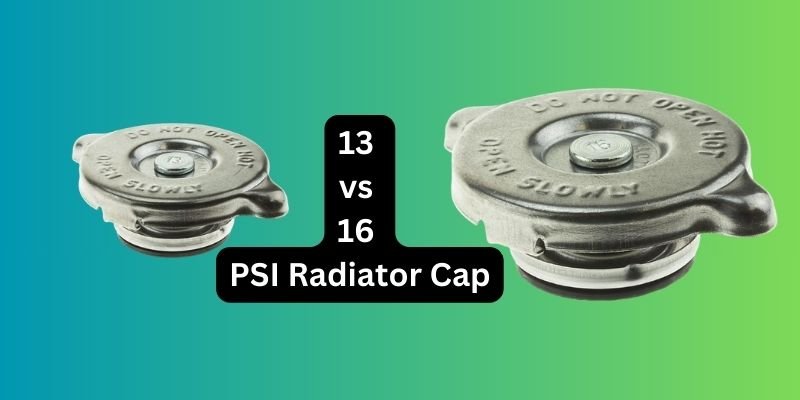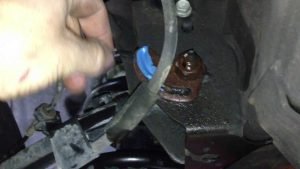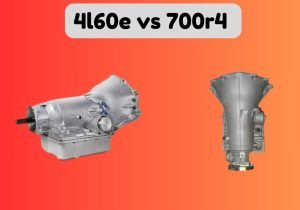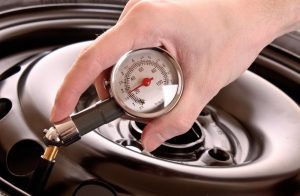Radiator caps may seem like small and insignificant components of a vehicle’s cooling system, but they play a crucial role in maintaining the system’s efficiency and preventing overheating. However, not all radiator caps are created equal, and the pressure rating of the cap can have a significant impact on the cooling system’s performance. In this blog post, we’ll explore the differences between 13 psi and 16 psi radiator caps, discussing when to use each one and the benefits and drawbacks of each pressure rating. Whether you’re a car enthusiast or just looking to maintain your vehicle’s cooling system, this guide will help you choose the right radiator cap for your needs.
Contents
What is a radiator cap?
A radiator cap is a small but critical component of a vehicle’s cooling system. It is located on top of the radiator and is responsible for maintaining the pressure in the system. The cap is designed to keep the coolant in the system under pressure, which raises its boiling point and helps prevent the engine from overheating. When the coolant reaches a certain pressure, the cap allows excess fluid to escape into the overflow reservoir, where it can be recirculated back into the system as needed. The radiator cap also serves as a seal, preventing air and contaminants from entering the cooling system. There are different types of radiator caps available, each with its own pressure rating, and choosing the right cap for your vehicle is essential to maintaining its cooling system’s efficiency and preventing potential engine damage.
What is the difference between a 13 psi and a 16 psi radiator cap?
The primary difference between a 13 psi and a 16 psi radiator cap is their pressure rating. A 13 psi cap is designed to release pressure from the cooling system once it reaches 13 pounds per square inch, while a 16 psi cap will release pressure once it reaches 16 pounds per square inch. The higher pressure rating of a 16 psi cap means that the coolant in the system can reach a higher temperature before it boils, which can be beneficial in certain situations. For example, if you have a high-performance engine that generates a lot of heat, a 16 psi cap may be better suited to maintain proper coolant pressure and prevent overheating. However, a higher pressure cap can also increase the risk of damage to other components in the cooling system, such as hoses and gaskets, due to the increased pressure. On the other hand, a 13 psi cap may be appropriate for less demanding applications, such as a standard passenger car, where a lower pressure cap can provide sufficient cooling system performance without unnecessary risk. Ultimately, the pressure rating of the radiator cap should be chosen based on the specific needs and specifications of the vehicle or engine in question.
| 13 psi cap | 16 psi cap | |
| Pressure rating | 13 pounds per square inch | 16 pounds per square inch |
| Boiling point | Lower boiling point due to lower pressure | Higher boiling point due to higher pressure |
| Cooling system performance | Lower pressure may be sufficient for standard vehicles | Higher pressure may be necessary for high-performance engines or heavy-duty applications |
| Risk of damage | Lower pressure reduces risk of damage to cooling system components | Higher pressure increases risk of damage to cooling system components |
| Application | Suitable for standard passenger vehicles | Suitable for high-performance engines or heavy-duty applications |
| Overall performance | Can provide sufficient performance for many applications | May provide better performance in certain demanding sit |
How Does the Difference in Tooth Count Impact the Performance of a Radiator Cap?
The differences between starter teeth can impact the performance of a radiator cap by affecting the overall functionality of the engine. A radiator cap with a higher tooth count can provide better pressure regulation and sealing, resulting in improved cooling system performance, while a lower tooth count may lead to potential leaks and inefficiency.
When should you use a 13 psi radiator cap?
A 13 psi radiator cap is suitable for standard passenger vehicles and less demanding applications where the cooling system doesn’t need to withstand high temperatures and pressure. Here are some situations where a 13 psi radiator cap may be appropriate:
Standard passenger cars: Most standard passenger cars are designed to operate with a 13 psi radiator cap. Using a higher pressure cap may increase the risk of damage to the cooling system components and may not provide any noticeable performance benefits.
Older vehicles: Older vehicles with less advanced cooling systems may not be able to handle the higher pressure of a 16 psi radiator cap. In these cases, a 13 psi cap may be the safer and more appropriate choice.
Moderate climates: In areas with moderate climates and lower ambient temperatures, a 13 psi radiator cap may be sufficient to maintain the cooling system’s efficiency.
Lower performance engines: Engines with lower horsepower output and less demanding cooling requirements may not require the higher pressure provided by a 16 psi cap.
In general, if your vehicle or engine does not generate high levels of heat or pressure, a 13 psi radiator cap may be suitable for your needs. However, be sure to consult your vehicle’s owner’s manual or a trusted mechanic to determine the appropriate radiator cap pressure rating for your specific application.
When should you use a 16 psi radiator cap?
A 16 psi radiator cap may be necessary for high-performance engines, heavy-duty applications, or situations where the cooling system needs to withstand higher temperatures and pressure. Here are some situations where a 16 psi radiator cap may be appropriate:
High-performance engines: Engines with high horsepower output and advanced cooling systems may require the higher pressure provided by a 16 psi radiator cap to maintain optimal performance.
Heavy-duty applications: Vehicles used for towing or other heavy-duty applications may generate higher heat and pressure, requiring a higher pressure cap to maintain the cooling system’s efficiency.
Hot climates: In areas with high ambient temperatures, a 16 psi radiator cap may be necessary to prevent the coolant from boiling and to maintain the proper pressure in the cooling system.
Modified engines: Engines that have been modified for increased performance may generate higher levels of heat and pressure, necessitating a higher pressure radiator cap.
In general, if your vehicle or engine generates high levels of heat or pressure, a 16 psi radiator cap may be necessary to maintain optimal cooling system performance. However, it’s important to consult your vehicle’s owner’s manual or a trusted mechanic to determine the appropriate radiator cap pressure rating for your specific application, as using a higher pressure cap than necessary can increase the risk of damage to the cooling system components.
Conclusion
In conclusion, the appropriate radiator cap pressure rating for your vehicle or engine depends on a variety of factors, including the size and design of the cooling system, the operating conditions, and the manufacturer’s recommendations. While a 13 psi radiator cap may be suitable for standard passenger vehicles and less demanding applications, a 16 psi cap may be necessary for high-performance engines, heavy-duty applications, or situations where the cooling system needs to withstand higher temperatures and pressure.
It’s important to consult your vehicle’s owner’s manual or a trusted mechanic to determine the appropriate radiator cap pressure rating for your specific application, as using the wrong cap can result in inefficient cooling system performance, overheating, or damage to cooling system components. By choosing the right radiator cap pressure rating for your needs, you can help ensure optimal cooling system performance and prevent costly damage to your vehicle’s engine.
Affiliate Disclosure: As an Amazon Associate, I earn from qualifying purchases made through links on this site.







